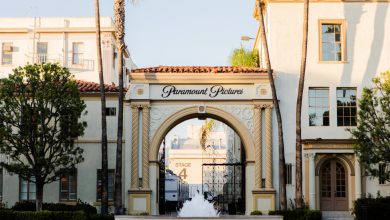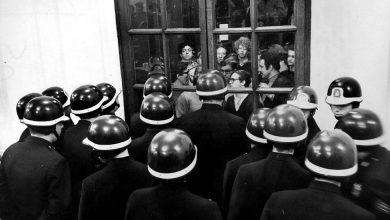Effort to Weaken Press Protections Isn’t Likely to End With Palin Case

Sarah Palin’s loss of her defamation lawsuit against The New York Times has reaffirmed, for now, more than a half-century of legal precedent that protects journalists when they make inadvertent — even sloppy — mistakes.
But her case still may have achieved another aim that she and her lawyers said they had all along: to shine an unflattering light on the process of producing daily journalism, and to nudge the courts to reconsider why the law sets an extremely high bar to prove defamation cases against media outlets.
“I’m not happy at the beating The Times — and the press in general — had to take in this process,” said RonNell Andersen Jones, a professor at the University of Utah College of Law, adding that it was “reassuring that both the judge and the jury independently saw that our strict constitutional protections don’t permit easy punishment of the press.”
Still, Ms. Andersen Jones added, “I can’t help but worry that the core principles took a hit here.”
While The Times succeeded in convincing a jury and a federal judge that Ms. Palin failed to prove that Times journalists acted with “actual malice” — meaning displaying a reckless disregard for the truth or publishing information known to be false, the standard the Supreme Court set in 1964 for public figures who sue for defamation — her case is not likely to be the last word on the matter.
Some Supreme Court justices have indicated they would like to revisit the issue. But First Amendment scholars said no single lawsuit at the moment appeared to be an ideal vehicle for that. There are several cases, however, that would highlight the paradoxes inherent in American libel law, lawyers sympathetic to adjusting the law said.
While the skepticism about Sullivan has come mostly, but not exclusively, from the political right, conservatives have also embraced the standard when faced with legal challenges. Some legal experts pointed out that those who have been accused in court of spreading false claims about voter fraud — including Fox News, One America News Network and Rudolph W. Giuliani — are arguing that it was protected speech.
The questions about what kind of speech in the media should remain constitutionally shielded from liability are especially pressing when the proliferation of false information threatens to further destabilize the nation’s deeply polarized political system.
“Society has changed enormously since 1964, when the Supreme Court decided New York Times v. Sullivan,” said Rodney Smolla, dean of the Delaware Law School of Widener University, referring to the case that established the current legal standard for proving defamation.
Mr. Smolla, who is helping to represent Dominion Voting Systems in its suit against Fox News for promoting baseless stories that claimed voting machines switched votes to aid President Biden, said the basic holding of the Sullivan case to preserve free public discourse, even if an occasional mistake was made, was sound. But he added that “the law has not kept pace” with an online dialogue that can be highly misleading.
What concerns supporters of broad First Amendment protections the most is a legal and political climate that seems to have gone sour for them.
A recent study that tracked every reference to the press in Supreme Court opinions found what the authors, Ms. Andersen Jones and Sonja R. West of the University of Georgia School of Law, characterized as “troubling trends” in language from the bench that suggest the current justices will be more willing to scale back longstanding constitutional protections for journalists.
“When members of the press turn to the court in their legal battles, they will no longer find an institution that consistently values their role in our democracy,” the study concluded.
In one key finding, the study revealed that phrases like “freedom of the press” — once routinely acknowledged by the justices — have now all but “dropped out of the U.S. Supreme Court’s collective vocabulary.” At times, the study noted, the court has seemingly gone out of its way to describe the news media as an institution in decline.
And these opinions aren’t limited to the justices’s opinions. In a speech to the Federalist Society, Justice Samuel A. Alito recently criticized as “sinister” the media’s depiction of the court’s practice of delivering late-night, unsigned opinions as a “shadow docket.”
The issue is not necessarily one that only conservatives are concerned with. Justice Elena Kagan, before she joined the court, wrote an article expressing skepticism about the way the Sullivan standard had been expanded by the courts since 1964.
These doubts are a far cry from the sentiment of Justice Hugo Black, who wrote in his concurring opinion in Sullivan that the press has “an absolute immunity for criticism of the way public officials do their public duty.”
Where some First Amendment lawyers think the law is most in need of revisiting is in the definition of what constitutes a public figure — a standard that some have argued is vague and too sweeping because it encompasses people who have a minimal public profile.
For an example of a defendant who was not a high-profile figure but treated as one by a judge, many lawyers point to Kathrine Mae McKee, who accused Bill Cosby of rape. Mr. Cosby denied the allegation, and Ms. McKee sued him for defamation after one of his representatives wrote a widely published letter questioning her credibility. A judge threw out the suit.
Ms. McKee was a public figure, a court ruled. That spurred Justice Clarence Thomas to write in 2019 that the court should reconsider the Sullivan case.
Lawyers for the conspiracy theorist Alex Jones said the same of the parents who sued him for claiming that the murder of their children in the Sandy Hook massacre was fabricated.
David A. Logan, a professor at the Roger Williams University School of Law, pointed to the case as an example of one where judges might be more sympathetic to people who claim defamation when they have not chosen to be in the public eye.
“If you’re a public figure, you basically lose these cases,” Mr. Logan said. And a case that might appeal to the Supreme Court, he added, is not necessarily one that restricts the definition of public figure so that it no longer covers people like Ms. Palin, the former governor of Alaska and 2008 Republican vice-presidential nominee. Rather, it could be one to protect less well-known individuals.
“I think a case that shows a stretch of the definition of a public figure would be consequential, and might be the case the court takes ahead of a frontal assault on New York Times v. Sullivan,” he said.




